
Capitalism Without Capital: The Rise of the Intangible Economy
by
Jonathan Haskel
and
Stian Westlake
Published 7 Nov 2017
Higher levels of trust and social capital may make it easier to reach stable consensus on these kinds of rules, which makes the rules themselves more reliable. Conclusion: Infrastructure in an Intangible World The death of distance has failed to take place. Indeed, the importance of spillovers and synergies has increased the importance of places where people come together to share ideas and the importance of the transport and social spaces that make cities work. But the death of distance may have been postponed rather than cancelled. Information technologies are slowly, gradually, replacing some aspects of face-to-face interaction. This may be a slow-motion change, like the electrification of factories—if so, the importance of physical infrastructure will radically change.
…
Hype and False Promises The idea that the growth of intangible investment would radically change the kind of infrastructure the economy needs will be familiar to anyone who has dipped into the more utopian end of the literature on the so-called knowledge economy, especially in the run-up to the dot-com bubble of 1998–2000. Commentators predicted the “death of distance”: that knowledge combined with digital technology would render unimportant the constraints of space and place that much of our infrastructure is an attempt to resolve. Investment in telecommunications infrastructure was seen as vitally important, leading to a bidding frenzy for 3G mobile spectrum licenses and to the US telecoms bubble and crash of 2001.
…
Environmental scientist Vaclav Smil points out the importance of infrastructure based on early twentieth-century technology for everything from our food system to our energy system (Smil 2005). However the rise of intangible investment plays out, it seems likely that investment in energy, passenger transportation, and logistics will continue to be important.2 Jess Gaspar and Edward Glaeser (1998) showed that the death of distance idea was more complicated than it first appeared: better information technologies might replace some face-to-face meetings, but they might create the need for other meetings—and, therefore, increase the value of living in cities, where it is easier to meet people. By way of analogy, the steam locomotive was described as an “iron horse” from the early nineteenth century, but did not replace horses or even reduce demand for them.

Restarting the Future: How to Fix the Intangible Economy
by
Jonathan Haskel
and
Stian Westlake
Published 4 Apr 2022
In 1968, computer scientist Douglas Engelbart demonstrated videoconferencing and simultaneous collaborative document editing.16 Three decades later, the journalist Frances Cairncross coined the term “the death of distance” to describe a world in which these technologies would free the economy from the vulgar constraints of place.17 At the beginning of 2020, place remained at least as important as ever: to the extent that people invoked the death of distance, they did so as an example of the naive optimism of yesteryear, alongside flying cars, the paperless office, and the end of history. COVID-19 offered a new hope for remote working.
…
In most countries, politicians are expected to deliver for the geographical constituency that elected them; saying “You’ll be better off if you move to the city” is not acceptable. Voters demand a vision of how declining places will turn around and return to their former glory, and if you can’t offer them one, they’ll vote for someone who will. Technocrats and politicians might agree that the possibility of the death of distance is no help at all. Technocrats will point out that it hasn’t happened yet, and there is no sign that it will. Politicians will say that there’s no sign that people want it (and, in the aftermath of COVID-19, will continue to make threats about how remote working will lead to all sorts of bad economic consequences, from the offshoring of jobs to the collapse of local economies).
…
These models deserve more evaluation and experimentation as a way of helping poorer places become more productive. At the same time, because there is not a consistent or reliable recipe for success, it is important for politicians to be realistic in their expectations for local growth. Speeding the Death of Distance We observed earlier that the rise in remote working occasioned by COVID-19 would not make the problems of place go away, but it may help address them at the margin. Shifting some employees to remote working will not reverse the Triumph of the City, but it will weaken it and offer an opportunity for some left-behind places to catch up, if they can formulate an attractive offer for remote workers.
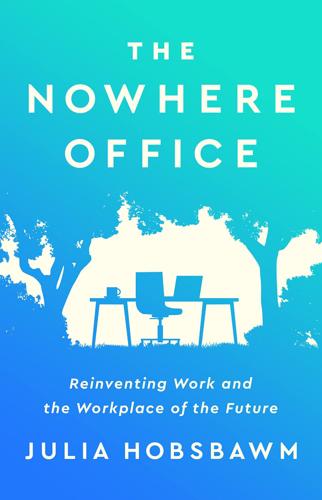
The Nowhere Office: Reinventing Work and the Workplace of the Future
by
Julia Hobsbawm
Published 11 Apr 2022
During lockdowns WhatsApp group usage soared by 40 per cent as isolated professionals realised that for all of its faults the office provided some kind of in-built network structure they had to remake alone.6 The management writer Frances Cairncross famously described the internet era as ‘the death of distance’7 but the Nowhere Office sees its rebirth. It is widely acknowledged among recruiters that the pandemic has widened the talent pool substantially.8 As I wrote in Chapter 1, everyone is more #GenMobile than they were before. Yet people crave close connection and they find workarounds when they cannot do so in person.
…
Mansoor Iqbal, ‘LinkedIn Usage and Revenue Statistics (2021)’, Business of Apps, 5 July 2021, https://www.businessofapps.com/data/linkedin-statistics/ 6. Sarah Perez, ‘Report: WhatsApp Has Seen a 40% Increase in Usage Due to Covid-19 Pandemic’, TechCrunch, 26 March 2020, https://techcrunch.com/2020/03/26/report-whatsapp-has-seen-a-40-increase-in-usage-due-to-covid-19-pandemic/ 7. Frances Cairncross, The Death of Distance: How the Communications Revolution is Changing Our Lives (Harvard Business Review Press, 2001) 8. Lin Grensing-Pophal, ‘Taking Advantage of a Broader Talent Pool’, Society for Human Resource Management, 3 February 2021, https://www.shrm.org/resourcesandtools/hr-topics/talent-acquisition/pages/taking-advantage-of-a-broader-talent-pool.aspx 9.
…
(Atlantic, 2021) Ferriss, Tim, The 4-Hour Work Week (Vermilion, 2011) Handy, Charles, The Empty Raincoat: Making Sense of the Future (Random House Business, 1995) ——, Myself, and Other Important Matters (Arrow Books, 2007) Hougaard, Rasmus, with Jacqueline Carter, and Gillian Coutts, One Second Ahead: Enhance Your Performance at Work with Mindfulness (Palgrave Macmillan, 2015) Ibarra, Herminia, Working Identity: Unconventional Strategies for Reinventing Your Career (Harvard Business Review Press, 2004) Lucassen, Jan, The Story of Work: A New History of Humankind (Yale University Press, 2021) Morrissey, Helena, Style and Substance: A Guide for Women Who Want to Win at Work (Piatkus, 2021) Moshfegh, Ottessa, My Year of Rest and Relaxation (Vintage, 2019) Pew Research Center, ‘On the Cusp of Adulthood and Facing an Uncertain Future: What We Know About Gen Z So Far’, https://www.pewresearch.org/social-trends/2020/05/14/on-the-cusp-of-adulthood-and-facing-an-uncertain-future-what-we-know-about-gen-z-so-far-2/ Rosenthal, Caitlin, Accounting for Slavery: Masters and Management (Harvard University Press, 2019) Weisberger, Lauren, The Devil Wears Prada (Doubleday, 2003) Chapter 3: Shift 3: The Productivity Puzzle Cohen, Josh, Not Working: Why We Have to Stop (Granta, 2018) Crawford, Matthew B., Shop Class as Soulcraft: An Inquiry into the Value of Work (Penguin Press, 2009) Frayne, David, The Refusal of Work: The Theory and Practice of Resistance to Work (Zed, 2015) Graeber, David, Bullshit Jobs: The Rise of Pointless Work, and What We Can Do About It (Allen Lane, 2018) Horowitz, Sara, Mutualism: Building the Next Economy from the Ground Up (Random House, 2021) Jaffe, Sarah, Work Won’t Love You Back: How Devotion to Our Jobs Keeps Us Exploited, Exhausted and Alone (Hurst, 2021) Jeevan, Sharath, Intrinsic: A Manifesto to Reignite Our Inner Drive (Endeavour, 2021) Kanter, Rosabeth Moss, Commitment and Community: Communes and Utopias in Sociological Perspective (Harvard University Press, 1972) Mayer, Colin, Firm Commitment: Why the Corporation is Failing Us and How to Restore Trust in It (Oxford University Press, 2013) Newport, Cal, Deep Work: Rules For Focused Success in a Distracted World (Piatkus, 2016) Russell, Bertrand, ‘In Praise of Idleness’, In Praise of Idleness (Routledge Classics, 2004 [1935]) Shafik, Minouche, What We Owe Each Other: A New Social Contract (Bodley Head, 2021) Sinclair, Upton, The Jungle (Penguin, 2002 [1906]) Soojung-Kim Pang, Alex, Rest: Why You Get More Done When You Work Less (Penguin Life, 2017) Wooldridge, Adrian, The Aristocracy of Talent: How Meritocracy Made the Modern World (Allen Lane, 2021) Chapter 4: Shift 4: New Networks Baker, Wayne, Networking Smart: How to Build Relationships for Personal and Organizational Success (McGraw-Hill, 1994) Burt, Ronald S., Brokerage and Closure: An Introduction to Social Capital (Oxford University Press, 2007) Cairncross, Frances, The Death of Distance: How the Communications Revolution is Changing Our Lives (Harvard Business Review Press, 2001) Christakis, Nicholas A., and James H. Fowler, Connected: The Surprising Power of Our Social Networks and How They Shape Our Lives (Little, Brown, 2009) Easley, David, and Jon Kleinberg, Networks, Crowds and Markets: Reasoning About a Highly Connected World (Cambridge University Press, 2010) Ferguson, Niall, The Square and the Tower: Networks, Hierarchies and the Struggle for Global Power (Penguin, 2018) Gratton, Lynda, The Shift: The Future of Work is Already Here (Collins, 2011) Hertz, Noreena, The Lonely Century: Coming Together in a World That’s Pulling Apart (Sceptre, 2020) Hobsbawm, Julia, Fully Connected: Social Health in an Age of Overload (Bloomsbury, 2017) Margonelli, Lisa, Underbug: An Obsessive Tale of Termites and Technology (Scientific American/Farrar, Straus and Giroux, 2018) Pinker, Susan, The Village Effect: Why Face-to-Face Contact Matters (Atlantic, 2014) Putnam, Robert, Bowling Alone (Simon & Schuster, 2000) Ryckman, Pamela, Stiletto Network: Inside the Women’s Power Circles That Are Changing the Face of Business (Amacom, 2013) Sandberg, Sheryl, Lean In: Women, Work and the Will to Lead (W.
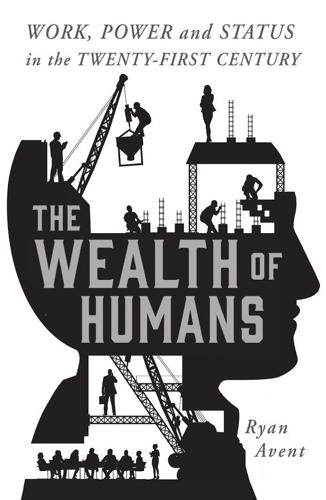
The Wealth of Humans: Work, Power, and Status in the Twenty-First Century
by
Ryan Avent
Published 20 Sep 2016
Cities are the cosy domains of the rich, and the rich would like to keep it that way. THE LIFE AND DEATH OF DISTANCE That a few cities should find themselves in this position represents something of a surprise. In 1997 a journalist at The Economist, Frances Cairncross, published a book titled The Death of Distance.1 Her book examined the ways in which the digital revolution was shaping and would continue to shape life and business. Though she seemed to be threatening to kill distance, Cairncross in fact foresaw a world in which distance was safe, happy and very much alive. Technology would, in fact, allow us to embrace distance, she predicted.
…
Brookings Institution, Global Metro Monitor (http://www.brookings.edu/research/reports2/2015/01/22-global-metro-monitor). 18. Acemoglu, Daron, and Robinson, James, ‘Why Did the West Extend the Franchise? Democracy, Inequality, and Growth in Historical Perspective’, Quarterly Journal of Economics, November 2000. 7. Playgrounds of the 1 per cent 1. Cairncross, Frances, The Death of Distance: How the Communications Revolution Is Changing Our Lives (Cambridge, MA: Harvard Business School Press, 1997). 2. UK Office for National Statistics. 3. US Census Bureau 4. Glaeser, Edward, and Resseger, Matthew, ‘The Complementarity Between Cities and Skills’, Journal of Regional Science, 13 January 2010. 5.
…
(Cambridge, MA: Harvard University Press, 2015) Boustan, Leah Platt, Frydman, Carola, and Margo, Robert A., eds., Human Capital in History: The American Record (Chicago, IL: University of Chicago Press, 2014) Brynjolfsson, Erik, and McAfee, Andrew, Race Against the Machine: How the Digital Revolution is Accelerating Innovation, Driving Productivity, and Irreversibly Transforming Employment and the Economy (Digital Frontier Press, 2011) _____, The Second Machine Age: Work, Progress, and Prosperity in a Time of Brilliant Technologies (New York, NY: W. W. Norton & Company, 2014) Cairncross, Frances, The Death of Distance: How the Communications Revolution is Changing Our Lives (Cambridge, MA: Harvard Business School Press, 1997) Christensen, Clayton M., The Innovator’s Dilemma: When New Technologies Cause Great Firms to Fail (Cambridge, MA: Harvard Business Review Press, 1997) Cowen, Tyler, Average is Over: Powering America Beyond the Age of the Great Stagnation (New York, NY: E.

The Gated City (Kindle Single)
by
Ryan Avent
Published 30 Aug 2011
Both the timing and the nature of the shift suggest that the revolution in information and communications technologies play a key role. And indeed, a number of the studies cited above either assume or speculate that information technology is driving the changing relationship between skills, cities, and productivity. In a paper called, "Did the death of distance hurt Detroit and help New York?" economists Edward Glaeser and Giacomo Ponzetto make this connection explicitly. They produce a model in which falling transportation and communication costs boost the fortunes of talent-rich places, while eroding the benefits to concentrations of manufacturing.
…
Glaeser, Edward, Triumph of the City: How Our Greatest Invention Makes Us Richer, Smarter, Healthier, Greener, and Happier, The Penguin Press, February 10, 2011. Glaeser, Edward and Matthew Kahn, “The Greeness of Cities: Carbon Dioxide Emissions and Urban Development”, NBER Working Paper No. 14238, August 2008. Glaeser, Edward and Giacomo Ponzetto, “Did the Death of Distance Hurt Detroit and Help New York?”, August 2007. Glaeser, Edward, Giacomo Ponzetto, and Kristina Tobio, “Cities, Skills, and Regional Change”, March 31, 2011. Glaeser, Edward and Kristina Tobio, “The Rise of the Sunbelt”, April 2007. Goldin, Claudia and Lawrence Katz, “Long-Run Changes in the Wage Structure: Narrowing, Widening, Polarizing”, Brookings Papers on Economic Activity, 2007:2.
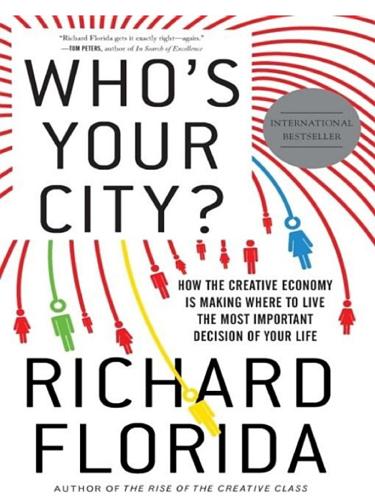
Who's Your City?: How the Creative Economy Is Making Where to Live the Most Important Decision of Your Life
by
Richard Florida
Published 28 Jun 2009
Much of my own research on this subject is summarized in The Rise of the Creative Class, Basic Books, 2002. Chapter 2 1 Thomas Friedman, The World Is Flat, Farrar, Straus & Giroux, 2005. 2 The original article is Frances Cairncross, “The Death of Distance,” The Economist, September 30, 1995. She later published an influential book by the same title, The Death of Distance, Harvard Business School Press, 2001. Also, “Conquest of Location,” The Economist, October 7, 1999. 3 Edward E. Leamer, “A Flat World, A Level Playing Field, a Small World After All or None of the Above? Review of Thomas L. Friedman, The World Is Flat,” Journal of Economic Literature 45, 1, 2007, pp. 83-126. 4 Urbanization data are from “World Population Prospects: The 2006 Revision Population Database,” Population Division, Department of Economic and Social Affairs, United Nations 2007, esa.un.org/unpp. 5 “Q&A with Michael Porter,” Business Week, August 21, 2006, www.businessweek.com/magazine/content/06_34/b3998460.htm. 6 Richard Florida, “The World is Spiky,” Atlantic Monthly, October 2005. 7 Gulden used the light that is visible from space at night as a basis for estimating economic activity.
…
From the invention of the telegraph and the telephone, the automobile and the airplane, to the rise of the personal computer and the Internet, many have argued that technological progress has eroded the economic significance of physical location. The same prophecies persist today. In 1995 The Economist proclaimed the death of distance. “Thanks to technology and competition in telecoms,” journalist Frances Cairncross predicted, “distance will soon be no object.” Four years later the same magazine proudly announced the conquest of location. “The wireless revolution is ending the dictatorship of place in a more profound way.”2 The new communications technologies were proving to be the great levelers in an increasingly globalized world.

Age of the City: Why Our Future Will Be Won or Lost Together
by
Ian Goldin
and
Tom Lee-Devlin
Published 21 Jun 2023
This is a book that has been many years in the making, with its origin in the great paradox of modern globalization: that declining friction in the movement of people, goods and information has made where you live more important than ever. Appreciation of the complexity of globalization has come a long way since the early 2000s, when Thomas Friedman’s The World is Flat and Frances Cairncross’s The Death of Distance captured the public’s imagination. With the power of hindsight, we now know that place is of utmost importance in a globalized world. That world is being shaken by a populist politics, often built on anger against cosmopolitan urban elites in major global cities. This has been given expression through Brexit in Britain, and in support for anti-establishment politicians in the US, France, Italy, Sweden and other countries.
…
Broom, D., 2021, ‘Home or office? Survey shows opinions about work after COVID-19’, World Economic Forum (weforum.org). C40 Cities, 2018, ‘The Future We Don’t Want’ (c40.org). Cadman, E., 2021, ‘Your new office set-up is going to look a lot like the old one’, Bloomberg News. Cairncross, F., 2001, The Death of Distance (Harvard Business Review Press). Cantor, N. F., 2002, In the Wake of the Plague: The Black Death and the World It Made (HarperCollins). Carpineti, A., 2022, ‘Nine of the top 10 hottest years ever all occurred in the last decade’, IFL Science (iflscience.com). Cawthorn, D-M. and Hoffman, L., 2015, The bushmeat and food security nexus: A global account of the contributions, conundrums and ethical collisions, Food Research International, Vol. 76 Centers for Disease Control and Prevention, 2021, ‘Zoonoses’ (cdc.gov).
…
Gibson, C., 1998, ‘Population of the 100 largest cities and other urban places in the United States: 1790 to 1990’, US Census Bureau (census.gov). Gladstone, N., 2019, ‘Air quality ten times hazardous levels in Sydney’, Sydney Morning Herald. Glaeser, E., 2005, ‘Reinventing Boston: 1630–2003’, Journal of Economic Geography, Vol. 5, No. 2. —, 2011, Triumph of the City (Penguin). Glaeser, E. and Ponzetto, G., 2007, ‘Did the death of distance hurt Detroit and help New York?’, NBER working paper. Glaeser, E. and Kahn, M., 2010, ‘The greenness of cities: carbon dioxide emissions and urban development’, Journal of Urban Economics, Vol. 67, No. 3. Glass, R., 1964, London: Aspects of Change (MacGibbon & Kee). Goldin, I., 2022, Rescue: From Global Crisis to a Better World (Sceptre).

Order Without Design: How Markets Shape Cities
by
Alain Bertaud
Published 9 Nov 2018
The goal is to maintain mobility such that the majority of commuting trips stay below 1 hour, in spite of the much longer distances involved. The unfortunate tendency of many current traffic managers is to restrict trips to avoid congestion. Instead they should better manage the road space available or adopt new technology to allow even more and faster trips. The Death of Distance Has Been Greatly Exaggerated In the “Star Trek” television series, the words “beam me up” were all that was needed to transport people and goods anywhere instantly through the teleportation machine. This imaginary technology allowed universal frictionless mobility. Unfortunately, it was fictional.
…
While the teleportation machine from Star Trek is likely to remain fiction, would communication technology—in particular, increasingly realistic teleconferencing—make location obsolete, providing a substitute for frictionless mobility? Or, in simpler terms, could communication technology replace the face-to-face contacts that generate most of our commuting trips? Indeed, it is much cheaper to move data than to move people. This is precisely the main argument developed by Frances Cairncross in her book The Death of Distance (2001). Cairncross suggests that the Internet and the global spread of wireless technology are increasingly making distance irrelevant. Communication technology would make face-to-face contact obsolete, and, in this sense, we would be getting closer to a Star Trek–like frictionless mobility, replacing the mobility of individuals by that of data.
…
The most environmentally attractive but remote rural areas of the world would have higher prices, while the least environmentally attractive, highest-density areas would have lost value. This is not happening. Real estate prices in New York, London, Delhi, and Shanghai are still climbing, proving that the death of distance might have been greatly exaggerated. High real estate prices demonstrate that even in cities where mobility causes severe friction—as in New York, London, or Shanghai—being physically close to a large concentration of people, jobs, and amenities is still worth a very high price. Measuring a City’s Mobility A Decrease in Congestion and Pollution Is Not a Measure of Mobility The objective of urban transport is to increase mobility to maximize the effective size of labor markets.

The Battery: How Portable Power Sparked a Technological Revolution
by
Henry Schlesinger
Published 16 Mar 2010
Subsidized by the government with $40,000, it was estimated that the project would take two years from start to finish. It was completed in four months, a full eight years before rail lines connected both coasts. The new network not only linked a sprawling continent, but definitively un coupled communication from travel time. This was more than simply another instance of the death of distance. It was a way to efficiently govern a nation whose cities were sprawled across a continent of once seemingly insurmountable size. The pony express, which still occupies a cherished place in America’s mythology, was actually a financial disaster, in large part because of the telegraph. Launched in April 1860, the relay mail service that spanned a continent couldn’t compete with the telegraph, which opened for business in October 1861.
…
Financial news could be transmitted quickly, companies began to expand, opening branch offices, while train traffic moved with more precision. Science also benefited. During the government-funded United States Coast Survey to measure longitude, astronomers relayed their time signals between observatories by telegraph for more accurate readings. There were also problems. America ran on local time. The death of distance caused havoc in commerce when it came to keeping accurate schedules and conducting business long distance. The world had become split between the near instant communication of ideas and the physical world, which was (and is) very much subject to travel time. For instance, railroads were expanding nearly as rapidly as telegraph lines after 1840.
…
A year or two later, ICs were built for the Minuteman missile systems of the early 1960s as well as for NASA, which was responding to President Kennedy’s challenge to put a man on the moon by the end of the decade. VERY SOON BATTERIES WOULD BE powering very small components doing highly complex calculations. Just as the telegraph had been responsible for the death of distance by severing the connection between the flow of information and travel time, the IC shattered the long-standing relationship between the complexity of a task and the size of the device performing it. Small and portable devices could now be built to perform extremely complex work quickly. This was made clear a few years ago when a group of electrical engineering students at the University of Pennsylvania decided to commemorate the fiftieth anniversary of ENIAC by replicating its entire processing architecture, all 30 tons of 18,000 vacuum tubes, 7,200 diodes and 1,500 relays on a single computer chip that measured a petite 7.44 by 5.29 square millimeters.

The Technology Trap: Capital, Labor, and Power in the Age of Automation
by
Carl Benedikt Frey
Published 17 Jun 2019
Bookshops became meeting places for intellectuals. And cities that adopted the new printing technology also attracted paper mills, illuminators, and translators. Like the computer revolution, to which we shall return in chapter 10, the first revolution in information technology did not spell the death of distance. Just like computing, printing made the tyranny of geography all the more apparent, prompting people to cluster together and increasing urbanization. Thus, like the computer revolution, the revolution in printing, if anything, made the world less flat. Though the printing industry itself was too small to drive aggregate growth, there can be no doubt that printing experienced a Schumpeterian transformation, as scribes, who made copies of manuscripts before the invention of printing, found their skills being rendered redundant.
…
In the 1980s and 1990s, it was believed that the exact opposite would happen. With the advent of the World Wide Web, email, and cell phones, pundits proclaimed that location would soon become irrelevant and the curse of geography a distant memory.24 Futurists like Alvin Toffler even predicted that the death of distance would eventually render the city obsolete.25 And in 2005, the cover of the first edition of Thomas Friedman’s best-selling The World Is Flat pictured a world in which geographic divisions were history.26 Information technology, these authors declared, was making face-to-face interactions unnecessary, so that the time when companies and workers had to cluster in expensive places like Manhattan or Silicon Valley would soon be over.
…
Oswald, 1994, “Unhappiness and Unemployment,” Economic Journal 104 (424): 655. 23. D. S. Massey, J. Rothwell, and T. Domina, 2009, “The Changing Bases of Segregation in the United States,” Annals of the American Academy of Political and Social Science 626 (1): 74–90. 24. See, for example F. Cairncross, 2001, The Death of Distance: 2.0: How the Communications Revolution Will Change Our Lives (New York: Texere Publishing). 25. A. Toffler, 1980, The Third Wave (New York: Bantam Books). 26. T. L. Friedman, 2006, The World is Flat: The Globalized World in the Twenty-first Century (London: Penguin). 27. E. L. Glaeser, 1998, “Are Cities Dying?

Machine, Platform, Crowd: Harnessing Our Digital Future
by
Andrew McAfee
and
Erik Brynjolfsson
Published 26 Jun 2017
Friedman, Thank You for Being Late: An Optimist’s Guide to Thriving in the Age of Accelerations (New York: Farrar, Straus, and Giroux, 2016), Kindle ed., loc. 414. 136 cost $0.02: Statistic Brain Research Institute, “Average Cost of Hard Drive Storage,” accessed January 31, 2017, http://www.statisticbrain.com/average-cost-of-hard-drive-storage. 136 $11 in 2000: Matthew Komorowski, “A History of Storage Cost,” last modified 2014, Mkomo.com. http://www.mkomo.com/cost-per-gigabyte. 137 “the death of distance”: Francis Cairncross, The Death of Distance: How the Communications Revolution Will Change Our Lives (Boston: Harvard Business School Press, 1997). 138 computer programmer Craig Newmark: Craig Newmark, LinkedIn profile, accessed February 1, 2017, https://www.linkedin.com/in/craignewmark. 138 to let people list local events in the San Francisco area: Craigconnects, “Meet Craig,” accessed February 1, 2017, http://craigconnects.org/about. 138 700 local sites in seventy countries by 2014: Craigslist, “[About > Factsheet],” accessed February 1, 2017, https://www.craigslist.org/about/factsheet. 138 estimated profits of $25 million: Henry Blodget, “Craigslist Valuation: $80 Million in 2008 Revenue, Worth $5 Billion,” Business Insider, April 3, 2008, http://www.businessinsider.com/2008/4/craigslist-valuation-80-million-in-2008-revenue-worth-5-billion. 138 charging fees for only a few categories of ads: Craigslist, “[About > Help > Posting Fees],” accessed February 1, 2017, https://www.craigslist.org/about/help/posting_fees. 139 over $5 billion between 2000 and 2007: Robert Seamans and Feng Zhu, “Responses to Entry in Multi-sided Markets: The Impact of Craigslist on Local Newspapers,” January 11, 2013, http://www.gc.cuny.edu/CUNY_GC/media/CUNY-Graduate-Center/PDF/Programs/Economics/Course%20Schedules/Seminar%20Sp.2013/seamans_zhu_craigslist%281%29.pdf. 139 $22 billion of US marketers’ budgets: “More than Two-Thirds of US Digital Display Ad Spending Is Programmatic,” eMarketer, April 5, 2016, https://www.emarketer.com/Article/More-Than-Two-Thirds-of-US-Digital-Display-Ad-Spending-Programmatic/1013789#sthash.OQclVXY5.dpuf. 139 over 8,000 servers that, at peak times, can process 45 billion ad buys per day: “Microsoft and AppNexus: Publishing at Its Best (Selling),” AppNexus Impressionist (blog), November 3, 2015, http://blog.appnexus.com/2015/microsoft-and-appnexus-publishing-at-its-best-selling. 139 Belgian: Matthew Lasar, “Google v.
…
Once people pay for Internet access, they don’t pay per bit of traffic they send or receive.# Second, it’s free to send that bit next door or halfway around the world. The Internet’s architecture is, in fundamental ways, indifferent to physical separation, leading to what the journalist Francis Cairncross has called “the death of distance” as a factor limiting the spread of information. Free, perfect, and instant make a powerful combination, worth more than each of these characteristics separately. Thus it is very difficult to compete with. Imagine trying to run a physical newspaper or music retailer against a rival that could replicate and distribute the same products freely, perfectly, and instantly.
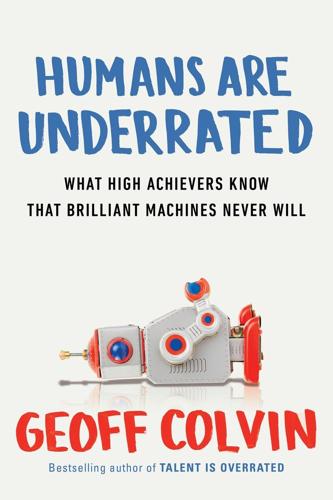
Humans Are Underrated: What High Achievers Know That Brilliant Machines Never Will
by
Geoff Colvin
Published 3 Aug 2015
That fact explicitly contradicts many learned predictions of how the Internet and mobile phones would change fundamentally the ways we operate. With today’s technology, just think how much more widely we can explore for new ideas, and how much more easily we can engage with members of our group, than could the Neanderthals of the 1980s or before. An acclaimed book at the dawn of the Internet age, The Death of Distance, argued that “new communications technologies are rapidly obliterating distance as a relevant factor in how we conduct our business and personal lives.” Heaven knows those technologies have indeed changed our lives, but when it comes to exploring, engaging, and creating, distance is at least as limiting as ever.
…
Joshua Wolf Shenk, Powers of Two: Finding the Essence of Innovation in Creative Pairs (Houghton Mifflin Harcourt, 2014). “What I saw . . . in creative pairs was trust . . .” Ibid., p. 33. Even Sartre and de Beauvoir . . . Ibid., p. 119. An acclaimed book at the dawn of the Internet age . . . Frances Cairncross, The Death of Distance: How the Communications Revolution Is Changing Our Lives (Texere Publishing, 1997). It isn’t just the simple explanation that more people would produce more ideas . . . Luís M. A. Bettencourt, Geoffrey B. West, “Bigger Cities Do More with Less,” Creativity, published by Scientific American Mind, 2013.
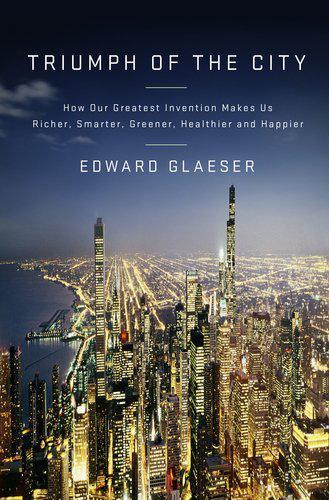
Triumph of the City: How Our Greatest Invention Makes Us Richer, Smarter, Greener, Healthier, and Happier
by
Edward L. Glaeser
Published 1 Jan 2011
In the richer countries of the West, cities have survived the tumultuous end of the industrial age and are now wealthier, healthier, and more alluring than ever. In the world’s poorer places, cities are expanding enormously because urban density provides the clearest path from poverty to prosperity. Despite the technological breakthroughs that have caused the death of distance, it turns out that the world isn’t flat; it’s paved. The city has triumphed. But as many of us know from personal experience, sometimes city roads are paved to hell. The city may win, but too often its citizens seem to lose. Every urban childhood is shaped by an onrush of extraordinary people and experiences—some delicious, like the sense of power that comes from a preteen’s first subway trip alone; some less so, like a first exposure to urban gunfire (an unforgettable part of my childhood education in New York City thirty-five years ago).
…
Even New York’s publishing preeminence ultimately reflected the city’s central place on transatlantic trade routes, as the big money in nineteenth-century books came from being the first printer out with pirated copies of English novels. The Harper brothers really arrived as publishers when they beat their Philadelphia competitors by printing the third volume of Walter Scott’s Peveril of the Peak twenty-one hours after it arrived in New York by packet ship. In the twentieth century, however, the death of distance destroyed the transport-cost advantages that had made New York a manufacturing mammoth. Why sew skirts on Hester Street when labor is so much cheaper in China? Globalization brought fierce competition to the companies and cities that made anything that could be easily shipped across the Pacific.
…
The declining cost of connecting over long distances has only increased the returns to clustering close together. Fifty years ago, most innovators played on a local stage. High transport costs limited one’s ability to make money quickly from selling a good idea worldwide. Today, traders in London or New York or Tokyo can instantly exploit a mispriced asset halfway around the world. The death of distance may have been hell on the goods producers in Detroit, who lost out to Japanese competitors, but it has been heaven for the idea producers of New York and San Francisco and Los Angeles, who have made billions on innovations in technology and entertainment and finance. Even when the financial world flails in one of its recurring downturns, we should be confident that its collective intelligence will eventually produce another boom.
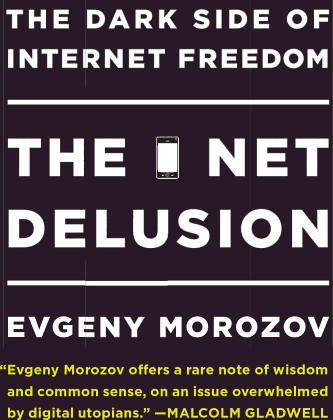
The Net Delusion: The Dark Side of Internet Freedom
by
Evgeny Morozov
Published 16 Nov 2010
When it comes to Twitter, from which the government cannot really withdraw a license, Chavez’s choice is not between censorship and free speech but between staying out of the Twitter space altogether—and thus, risking losing control of online conversations—and trying to infuse such conversations with his own ideology. This is not how it was supposed to be. Many early predictions about the Internet posited that it would rid the world of government propaganda. Frances Cairncross in her 1997 best seller, The Death of Distance, a defining text in the cyber-utopian canon, predicted that “free to explore different points of view, on the Internet or on the thousands of television and radio channels that will eventually be available, people will become less susceptible to propaganda from politicians.” Her prediction proved to be wrong: Governments have learned that they can still manipulate online conversations by slightly adjusting how they manufacture and package their propaganda, with some of their older and otherwise stale messages finding new life and appealing to new audiences.
…
“‘Treat Insiders and Outsiders Differently’: The Use and Control of Foreigners in the PRC.” China Quarterly 164 (2009): 943-964. Budaragin, Mihail. “Medvedevu i Obame ne Nuzhny Pervyj Kanal i CNN.” Vzgljad, January 12, 2010. www.vz.ru/politics/2010/1/12/364498.html. Cairncross, Frances. The Death of Distance: How the Communications Revolution Will Change Our Lives. Cambridge, MA: Harvard Business Press, 1997. Cancel, Daniel. “Chavez Adds iPod to Portfolio After Embracing BlackBerry, Twitter Account.” Bloomberg News, July 21, 2010. ———. “Chavez Says Twitter, Blackberry Are ‘Secret Weapon.’” Business Week, April 29, 2010. ———.
…
See also Popular culture Cyber walls Cyber-attacks Cybercrime Cyber-dissidents conference, Dallas, Texas. See also Dissidents Cyberdissidents.org Cyber-realism Cyber-utopianism Cyber-vigilantism Cyxymu Czech Republic Czechoslovakia Data Databases Davis, Angela DDoS attack. See Distributed-Denial-of-Service attack De Forest, Lee The Death of Distance (Cairncross) The Decameron (Boccaccio) Decentralization “A Declaration of the Independence of Cyberspace” (Barlow) Dedemocratization Deep packet inspection Defense community Deleuze, Gilles Democracy and authoritarian governments, weak in Eastern Europe, theories of and Facebook and information technology and Internet companies promotion of and technology threats to Democratic Alliance for the Betterment and Progress of Hong Kong The Denver Clan (television program) Depoliticization Dewey, Thomas Diamond, Larry Diasporas Dictators.
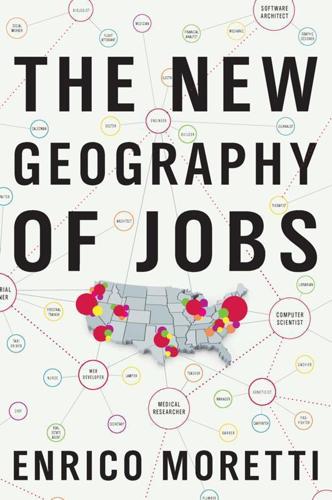
The New Geography of Jobs
by
Enrico Moretti
Published 21 May 2012
This book explores the root causes of these trends and what they mean for American communities, examining the special features of the United States that make it attractive for innovative companies. Understanding why jobs in this sector are clustering in America’s innovation hubs is the key to understanding our economic future. Despite all the hype about the “death of distance” and the “flat world,” where you live matters more than ever. Whether you work inside or outside the innovation sector, whether you are self-employed or work for others, where you live greatly affects all aspects of your life, from your career to your finances, from the kind of people you meet to the values your children are exposed to.
…
She was writing in the 1960s and 1970s, so her examples of innovation are old-fashioned, but her vision of what makes a society vital and prosperous still rings true today: innovation happens when people interact in a fertile urban environment and their ideas unexpectedly collide to create something that did not exist before. We live in a world that is full of paradoxes. This makes it sometimes challenging to comprehend, but also incredibly fascinating. One of the most intriguing paradoxes is that our global economy is becoming increasingly local. Despite all the hype about exploding connectivity and the death of distance, where we live and work is more important than ever. Our best ideas still reflect the daily, unpredictable stimuli that we receive from the people we come across and our immediate social environment. Most of our crucial interactions are still face-to-face, and most of what we learn that is valuable comes from the people we know, not from Wikipedia.
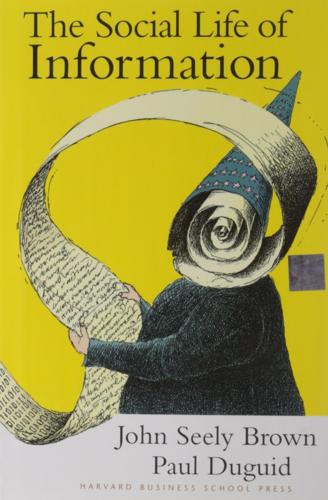
Social Life of Information
by
John Seely Brown
and
Paul Duguid
Published 2 Feb 2000
As a result, that region showed much less agility when its core, the minicomputer industry, was attacked by the PC. 32 Revivals This ecological view of knowledge not only highlights routes of innovation in the information age, it also challenges a couple of related "endisms" that infoenthusiasts have championed. The first is what has been talked of as the "death" of distance. The second, the death of the firm. Rumors of their death have certainly been exaggerated. Death of Distance Despite our various mixed metaphors, when we talk about the region and related notions of place and locality, we mean these terms quite literally. Even for information technology firms, neighborhoods and regions remain significant.
…
First, there's the 6-D focus on disaggregated institutions, demassified consumption, disintermediation, and so forth. Second, there's redefinition. Books and libraries appear as Page 211 little more than containers, education as little more than infodelivery, learning as infoconsumption. And third, there's a good bit of endism. The death of distance will apparently produce a global villagio uniting Indiana and the Apennines. With the villagio in mind, there's much buzz about such things as an "emerging electronic worldwide university" and the "virtual university." 8 The latter, according to one group of scholars, "does not have a traditional campus" because "electronic workspaces and global libraries . . . provide richer functionality than their physical analogs."

The Economics of Belonging: A Radical Plan to Win Back the Left Behind and Achieve Prosperity for All
by
Martin Sandbu
Published 15 Jun 2020
See also Martin Sandbu, “A Policy for Centrists Who Care about the Left-Behind,” Financial Times, 2 November 2017, https://www.ft.com/content/d9eca590-bf05-11e7-b8a3-38a6e068f464. 19. See Matt Clancy, “Rehabilitating the Death of Distance to Revitalize Rural Economies,” Matt Clancy’s Academic Homepage, blog post, 29 March 2019, http://matt-clancy.com/rehabilitating-the-death-of-distance-to-revitalize-rural-economies/. 20. See Emily Badger and Quoctrong Bui, “How Connected Is Your Community to Everywhere Else in America?,” New York Times, 19 September 2018, https://www.nytimes.com/interactive/2018/09/19/upshot/facebook-county-friendships.html, which uses data from Michael Bailey, Rachel Cao, Theresa Kuchler, Johannes Stroebel, and Arlene Wong, “Social Connectedness: Measurement, Determinants, and Effects,” Journal of Economic Perspectives 32, no. 3 (Summer 2018): 259–80, https://doi.org/10.1257/jep.32.3.259. 21.

Superbloom: How Technologies of Connection Tear Us Apart
by
Nicholas Carr
Published 28 Jan 2025
,” published in 1989, the same year Tim Berners-Lee invented the World Wide Web, Francis Fukuyama heralded the arrival of “the end point of mankind’s ideological evolution and the universalization of Western liberal democracy as the final form of human government.”2 The web seemed the perfect medium for the dawning age of universal democracy. The technology’s effect, wrote the prominent Economist editor Frances Cairncross in her 1997 book, The Death of Distance, “will be to increase understanding, foster tolerance, and ultimately promote worldwide peace.”3 Her words echoed, almost note for note, the utopian rhetoric that had accompanied new communication systems at the century’s start. The democratization story runs as a stirring refrain through Stevens’s opinion.
…
Sabine Trepte and Leonard Reinecke (Berlin: Springer, 2011), 33–45. 22.Ian Bogost, “The Age of Social Media Is Over,” Atlantic, November 10, 2022. Chapter 6: The Democratization Fallacy 1.Reno v. ACLU, 521 U.S. 844 (1997). 2.Francis Fukuyama, “The End of History?,” National Interest, Summer 1989. 3.Frances Cairncross, The Death of Distance (Boston: Harvard Business School Press, 1997), xvi. 4.Douglas Rushkoff, Open Source Democracy: How Online Communication Is Changing Offline Politics (London: Demos, 2003). 5.Jeff Jarvis, “Argue with Me,” BuzzMachine, November 11, 2004. 6.Joe Trippi, The Revolution Will Not Be Televised: Democracy, the Internet, and the Overthrow of Everything (New York: Regan Books, 2004), 235. 7.Jay Rosen, “The People Formerly Known as the Audience,” Huffington Post, June 30, 2006. 8.Yochai Benkler, The Wealth of Networks: How Social Production Transforms Markets and Freedom (New Haven, CT: Yale University Press, 2006).

The London Problem: What Britain Gets Wrong About Its Capital City
by
Jack Brown
Published 14 Jul 2021
As politicians encouraged workers back to the office to support grab-and-go eateries, others wondered if the ‘Pret economy’ – whereby well-paid service-sector workers paid over the odds for sandwiches served by their low-paid, often overseas-born equivalents – was such a good thing in the first place.9 London now faced existential questions about its future. Would remote working finally lead to the ‘death of distance’ predicted decades ago when technology first enabled working from home? In turn, would the agglomeration benefits provided by cities cease to matter? Would those residents, suddenly free of regular commuting obligations, flee the city for more affordable, more spacious accommodation in the suburbs and beyond?
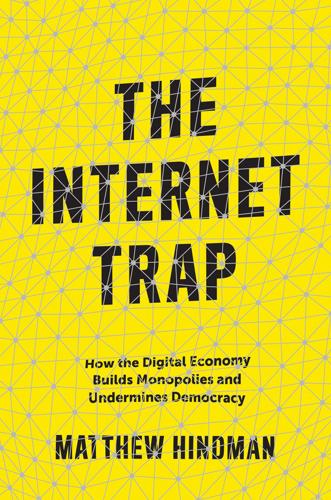
The Internet Trap: How the Digital Economy Builds Monopolies and Undermines Democracy
by
Matthew Hindman
Published 24 Sep 2018
In 2004 only about 12 percent of U.S. reporters lived in New York, Washington, D.C., or Los Angeles. By 2014, though, that proportion had jumped to about 20 percent and counting.42 More than 40 percent of digital journalism job listings are now located in the New York or D.C. metro areas.43 Far from announcing the “death of distance,”44 digital media has made news production more geographically concentrated. The same forces that have diminished metro news apply even more strongly at the neighborhood and hyperlocal level. To see how, add a third level of news to the model above: national, local, and now hyperlocal. Imagine a hyperlocal news site in Midway, the Old Town Observer.
…
Cadwalladr, C., and Graham-Harrison, E. (2018, March). Revealed: 50 million Facebook profiles harvested for Cambridge Analytica in major data breach. The Guardian. Retrieved from https://www.theguardian.com/news/2018/mar/17/cambridge -analytica-facebook-influence-us-election. Cairncross, F. (2001). The death of distance: how the communications revolution is changing our lives. Cambridge, MA: Harvard Business School Press. Calabresi, M. (2017, May). Inside Russia’s social media war on America. Time. Retrieved from http://time.com/4783932/inside-russia-social-media-war-america/. Caldas, A., Schroeder, R., Mesch, G., and Dutton, W. (2008).

The Economics of Enough: How to Run the Economy as if the Future Matters
by
Diane Coyle
Published 21 Feb 2011
Face-to-face contact occurs in cities: cities have always been hot spots of the economy, but their relative importance has increased. Many observers of the new technologies in the 1990s assumed that because it was now so easy and cheap to communicate at a distance, longer-distance work contacts would supplant face-to-face interaction. The phenomenon was labeled “the death of distance.”26 Some pundits predicted that there would be a shift toward working at home, and that companies would become more dispersed if they were not tied to specific places by the cost of communicating. Globalization has certainly spread production all over the world, which seems to confirm the theory.
…
Buchanan, James, and Gordon Tullock. 1962. The Calculus of Consent: Logical Foundations of Constitutional Democracy. Ann Arbor: University of Michigan Press. Buckley, Bryan, and Sergey Mityakov. 2009. “The Cost of Climate Regulation for American Households.” Arlington, VA: The Marshall Fund. Cairncross, Frances. 1997. The Death of Distance. Cambridge, MA: Harvard Business Press. Camerer, Colin, George Loewenstein, and Matthew Rabin. 2003. Advances in Behavioral Economics. Princeton: Princeton University Press. Castles, I. and P. D. Henderson. 2003a. “The IPCC Emissions Scenarios: An Economic-Statistical Critique.” Energy and Environment 14:2, pp. 159–86. ———. 2003b.

As the Future Catches You: How Genomics & Other Forces Are Changing Your Work, Health & Wealth
by
Juan Enriquez
Published 15 Feb 2001
(http://it.stlawu.edu/~dmelvill/mesomath/index.html). If you want to learn to count in cuneiform go tohttp://it.stlawu.edu/~dmelvill/mesomath/Numbers.html. 3. Nicolas Negroponte wrote a wonderful book on this: Being Digital (New York: Knopf, 1995). A more recent, more technical book is Frances Cairncross’ The Death of Distance: How the Communications Revolution Will Change Our Lives (Boston: Harvard Business School Press, 1997); or see Neal Stephenson’s In the Beginning … Was the Command Line (New York: Avon, 1999). 4. Various organizations monitor these trends, among them Gartner and Telegeography. For a summary see Juan Enriquez, “Latin America’s Changing Media: Social, Political, and Economic Implications,” Latin American Studies Association, September 24, 1998, Chicago. 5.

Geek Heresy: Rescuing Social Change From the Cult of Technology
by
Kentaro Toyama
Published 25 May 2015
Mother Jones, May 14, 2014, www.motherjones.com/environment/2012/05/toms-shoes-buy-one-give-one. Butterfield, L. H., Marc Friedlaender, and Mary-Jo Kline, eds. (1975). The Book of Abigail and John: Selected Letters of the Adams Family, 1762–1784. Harvard University Press. Cairncross, Frances. (1997). The Death of Distance: How the Communications Revolution Will Change Our Lives. Harvard Business School Press. ———. (2001). The Death of Distance 2.0: How the Communications Revolution Will Change Our Lives. Texere. Camerer, Colin F., and Richard H. Thaler. (1995). Anomalies: Ultimatums, dictators and manners. Journal of Economic Perspectives 9(2):209–219, www.aeaweb.org/articles.php?

Masters of Management: How the Business Gurus and Their Ideas Have Changed the World—for Better and for Worse
by
Adrian Wooldridge
Published 29 Nov 2011
This is changing the “old” economy as well as the new. Every day tens of thousands of ships, flagged in Panama, registered in Malta, insured in London, and staffed by sailors from every corner of the world, carry goods from one corner of the world to another. In general, this is making knowledge ever more important: as the death of distance brings millions of cheap hands and brains into competition with more expensive ones, the only sustainable source of advantage becomes the ability to outthink your rivals. Reasons to Panic What does all this mean for the heroes of this chapter—everyday companies and the company men and women who run them?
…
But it soon turned out that the problem with producing world cars was that there was no archetypical world consumer to buy them: in particular, American consumers were much keener on buying big cars than Europeans—partly because they wanted more space for their big bodies, but partly because gas was 40 percent cheaper in the States than in Europe. There are two simple reasons for the failure of this flat-earth strategy. The first is that reports of the death of distance are exaggerated. Pankaj Ghemawat, of IESE Business School in Barcelona, conjures up a series of striking figures to support his contention that we live in an era of semi-globalization rather than globalization. People who talk dismissively of “snail mail” might not be too surprised to learn that only 1 percent of the world’s physical letters cross national boundaries.
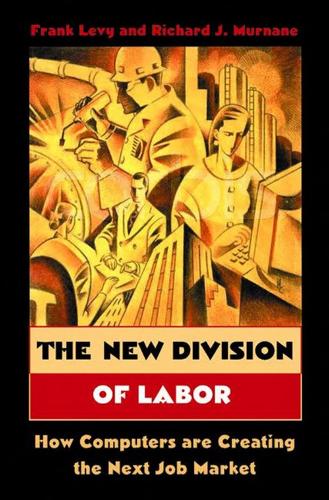
The New Division of Labor: How Computers Are Creating the Next Job Market
by
Frank Levy
and
Richard J. Murnane
Published 11 Apr 2004
Found at the following website: http://www.internet.com/corporate/releases/03.05.19-newjupresearch.html. CHAPTER 3. How Computers Change Work and Pay 1. Kark Sabbagh, 21st-Century Jet: The Making and Marketing of the Boeing 777 (New York: Scribner, 1996), 58–59. 2. See http://www.boeing.com/commercial/777family/compute/index.html. 3. See Frances Cairncross, The Death of Distance: How the Communications Revolution Will Change Our Lives (Cambridge: Harvard Business School Press, 1997). 4. A larger fraction of the entire population was working in the year 2000 than in 1969, but the unemployment rate is defined as: (number of people looking for work) (number of people looking for work + number of people working) , and this statistic could be equal in the two years because the number of people working and the number of people looking for work had both risen. 5.
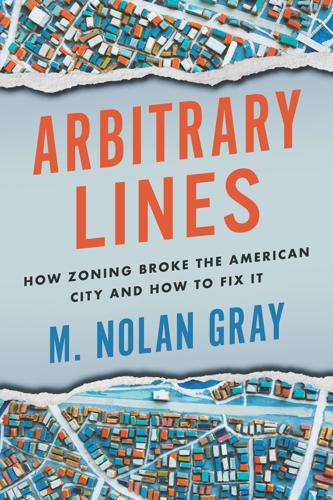
Arbitrary Lines: How Zoning Broke the American City and How to Fix It
by
M. Nolan Gray
Published 20 Jun 2022
And the technological innovations that continue to spin out of cities, from cheap smartphones and solar panels to the sequencing of the human genome, speak for themselves. These innovations improve all of our lives, regardless of whether you live in a city or not. For all the noise in recent decades about the death of distance, place matters, and it will continue to matter. Indeed, contrary to all the anti-urban doomsaying at the start of the COVID-19 pandemic, residential rents have largely already recovered by mid-2021, and office rents are poised to follow a similar track.17 Zoning for Stagnation Now more than ever, we should be concerned with cultivating this growth.

Aerotropolis
by
John D. Kasarda
and
Greg Lindsay
Published 2 Jan 2009
As the distance between these far-flung links in the chain increased, so did the need to traverse that distance as fast as possible. Because even as the size of the playing field has grown, the pace has gotten faster, and the increments counted in a just-in-time system have shrunk from seconds to something less. This, he said, led Toffler to declare that “time itself becomes a valuable product.” This combination of the death of distance and the just-in-time world has changed not only how companies compete but how cities compete as well. In the Instant Age, cities and their hinterlands go head-to-head for the most lucrative links in the chains. Civic pride, national heritage, and executive prestige mean little or nothing when pitted against falling trade barriers, cross-border conglomerates, quicksilver liquidity, and the over-weening need for speed.
…
Blalock’s Causal Inferences in Nonexperimental Research. The interview with Amos Hawley was conducted at his home in March 2008. He died August 31, 2009. Marshall McLuhan’s quote is taken from the first chapter of Understanding Media. The Ed Glaeser reference is to the working paper “Did the Death of Distance Hurt Detroit and Help New York?” by Edward L. Glaeser and Giacomo A. M. Ponzetto. Jane Jacobs’s recollection of Scranton and Wilkes-Barre is taken from Cities and the Wealth of Nations. Raymond Vernon introduced the product cycle in “International Investment and International Trade in the Product Cycle.”
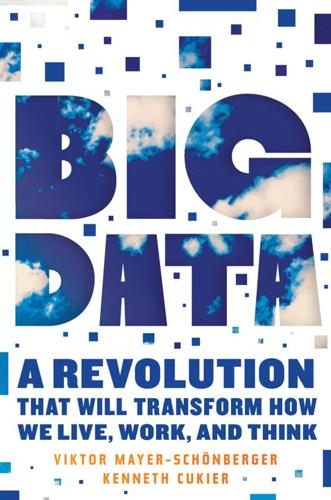
Big Data: A Revolution That Will Transform How We Live, Work, and Think
by
Viktor Mayer-Schonberger
and
Kenneth Cukier
Published 5 Mar 2013
Also, my appreciation goes to Teri Elniski for her tremendous support. Frances Cairncross, the Rector of Exeter College, Oxford, offered a tranquil place to stay and great encouragement. It is humbling to fix one’s mind upon questions of technology and society that build on those she raised a decade and a half earlier in The Death of Distance, a work that inspired me as a young journalist. It was satisfying to cross the Exeter courtyard each morning knowing that I might pass along a torch she carried, though the flame burned so much more brightly in her hands. My deepest appreciation goes to my family, who put up with me—or more commonly, with my absence.

23 Things They Don't Tell You About Capitalism
by
Ha-Joon Chang
Published 1 Jan 2010
Only when we part with this myth and grasp the political nature of the market and the collective nature of individual productivity will we be able to build a more just society in which historical legacies and collective actions, and not just individual talents and efforts, are properly taken into account in deciding how to reward people. Thing 4 The washing machine has changed the world more than the internet has What they tell you The recent revolution in communications technologies, represented by the internet, has fundamentally changed the way in which the world works. It has led to the ‘death of distance’. In the ‘borderless world’ thus created, old conventions about national economic interests and the role of national governments are invalid. This technological revolution defines the age we live in. Unless countries (or companies or, for that matter, individuals) change at corresponding speeds, they will be wiped out.
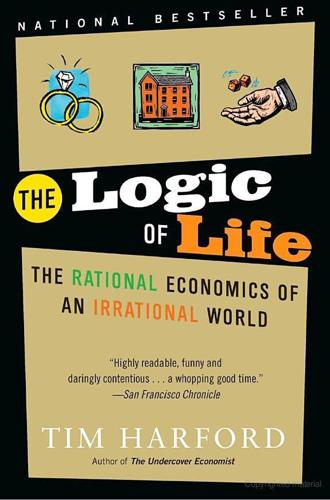
The Logic of Life: The Rational Economics of an Irrational World
by
Tim Harford
Published 1 Jan 2008
That is why cities have always been dependent on the best possible transport network; all roads lead to Rome. Now imagine that it gets easier to move things around. The cities can grow. More food is shipped from farther away, the city produces more-specialized manufactured products and can then sell them to distant customers. The “death of distance” doesn’t make the world flatter, it makes it spikier, with ever more activity taking place in big cities. When transport costs fall, rational people don’t spread out into the countryside, they cluster together in cities, or at least in suburbs. Historically, that has been true for transporting basic goods such as food, and transporting people, including commuters.

The Weightless World: Strategies for Managing the Digital Economy
by
Diane Coyle
Published 29 Oct 1998
It is, equally, both nonsense and politically unsophisticated — just so much globaloney — to embrace the opposite point of view, that there are unlimited benefits to be reaped from globalisation if only everybody would stop grumbling. The idea that what is happening to the world is globalisation has become a cliché. It dates back to Marshall McLuhan’s ‘global village’, and has adhered to our mental processes through all the subsequent technological changes, resurfacing again most recently as the ‘death of distance’. But it does not capture the essential nature of the transformation we are living through. Consider the fashionable argument that the degree of trade and investment and migration between nations is no greater now than it was a century ago, and therefore there is nothing special (and nothing that governments cannot handle using conventional economic policies) about what is happening now.
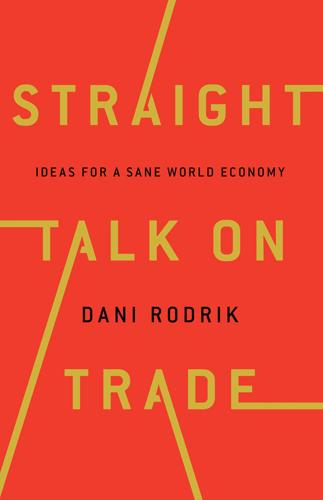
Straight Talk on Trade: Ideas for a Sane World Economy
by
Dani Rodrik
Published 8 Oct 2017
They used their computer network to facilitate a range of social activities, from organizing barbecues to helping local children with their homework. Netville exhibited, as one resident put it, “a closeness that you don’t see in many communities.” What was supposed to have unleashed global engagement and networks had instead strengthened local social ties. There are plenty of other examples that belie the death of distance. One study identified strong “gravity” effects on the Internet: “Americans are more likely to visit websites from nearby countries, even controlling for language, income, immigrant stock, etc.”26 For digital products related to music, games, and pornography, a 10 percent increase in physical distance reduces the probability that an American will visit the website by 33 percent—a distance elasticity even higher (in absolute value) than for trade in goods.
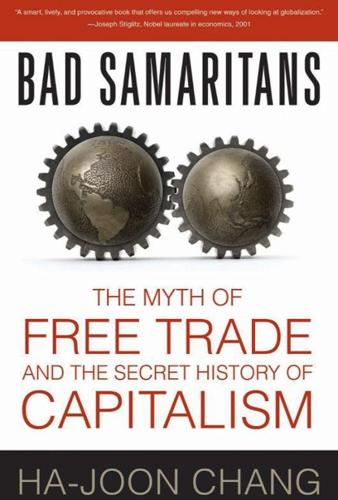
Bad Samaritans: The Myth of Free Trade and the Secret History of Capitalism
by
Ha-Joon Chang
Published 26 Dec 2007
Bilateral and regional free trade agreements (FTAs) and bilateral investment treaties (BITs) between rich and poor countries also restrict the ability of developing countries to regulate FDI.53 Forget history, say the Bad Samaritans in defending such actions. Even if it did have some merits in the past, they argue, regulation of foreign investment has become unnecessary and futile, thanks to globalization, which has created a new ‘borderless world’. They argue that the ‘death of distance’ due to developments in communications and transportation technologies has made firms more and more mobile and thus stateless – they are not attached to their home countries any more. If firms do not have nationality any more, it is argued, there are no grounds for discriminating against foreign firms.

Future Files: A Brief History of the Next 50 Years
by
Richard Watson
Published 1 Jan 2008
You can sleep, watch a movie or feast like a king. But most of all, a plane is one of the few remaining thinking spaces where your mind can drift and dream. Airlines will sooner or later figure this out and design the environment accordingly. Trains and ships will cater to this need too. The death of distance — for a while So much for how we’ll get to where we’re going, but where will we actually go? One answer is nowhere. If flying from one city or 270 FUTURE FILES country to another becomes too expensive, time-consuming or stressful, many people will simply choose to stay at home. This means that both business and travel will become more localized.

Bad Samaritans: The Guilty Secrets of Rich Nations and the Threat to Global Prosperity
by
Ha-Joon Chang
Published 4 Jul 2007
Bilateral and regional free trade agreements (FTAs) and bilateral investment treaties (BITs) between rich and poor countries also restrict the ability of developing countries to regulate FDI.53 Forget history, say the Bad Samaritans in defending such actions. Even if it did have some merits in the past, they argue, regulation of foreign investment has become unnecessary and futile, thanks to globalization, which has created a new ‘borderless world’. They argue that the ‘death of distance’ due to developments in communications and transportation technologies has made firms more and more mobile and thus stateless – they are not attached to their home countries any more. If firms do not have nationality any more, it is argued, there are no grounds for discriminating against foreign firms.

The Wisdom of Crowds
by
James Surowiecki
Published 1 Jan 2004
Barry Bozeman, for instance, found that academic researchers spend only a third of their time working with people who are not in their immediate work group, and only a quarter of their time working with people who are outside their university. That’s not too surprising. For all the talk of the “death of distance,” people still prefer to work in close physical proximity to their colleagues. But as the SARS example suggests, this may be changing. Technology is now making global collaboration not just possible but easy and productive. And the value of working across not only universities but nations is clearly immense, while limiting yourself to the skill set found in your immediate department or working group seems self-defeating.

A Pelican Introduction Economics: A User's Guide
by
Ha-Joon Chang
Published 26 May 2014
International economic integration of course had been going on since the sixteenth century, but according to the new globalization narrative, this process has reached an entirely new stage. This was thanks to the technological revolutions in communications (the internet) and transportation (air travel, container shipping), which were leading to the ‘death of distance’. According to the globalizers, countries now had no choice but to embrace this new reality and fully open up to international trade and investments, while liberalizing their domestic economies. Those who resisted this inevitability were derided as the ‘modern Luddites’, who think they can bring back a bygone world by reversing technological progress (see above).

A World Without Work: Technology, Automation, and How We Should Respond
by
Daniel Susskind
Published 14 Jan 2020
The “information highway” could be ridden by everyone, at little cost or inconvenience, from the comfort of their own living rooms. But that view turned out to be misconceived. As Enrico Moretti, perhaps the leading scholar studying these phenomena, puts it, today, despite “all the hype about the ‘death of distance’ and the ‘flat world,’ where you live matters more than ever.”27 In many ways, this is intuitive. Stories of technological progress are often tied up with tales of regional rise and fall: think of the Rust Belt versus Silicon Valley, for instance. From 2000 to 2010, the US areas with the biggest fall in population (aside from New Orleans, battered by Hurricane Katrina) were Detroit, Cleveland, Cincinnati, Pittsburgh, Toledo, and St.

The AI Economy: Work, Wealth and Welfare in the Robot Age
by
Roger Bootle
Published 4 Sep 2019
Accordingly, this might imply that regional disparities will be reduced as economic activity, and hence accommodation for people, might as well migrate to where land and services are cheaper. The implication would surely be a migration away from expensive cities toward cheaper towns, villages, and regions. Yet I am wary of accepting these conclusions. It would not be the first time that “the Death of Distance” has been pronounced – prematurely. This was supposed to happen as a result of the computer and communications revolution as people were now able to work, play, and communicate at great distance from each other. To some extent this has happened, of course. But it has not led to the dispersal of economic activity.

The Evolution of Everything: How New Ideas Emerge
by
Matt Ridley
Today, the most successful cities, like London, New York and Tokyo, are places of fancy food, entertainment, mating arenas (sorry – clubs) and opportunity for the aspiring poor. From Rio to Mumbai cities are the engines of prosperity, the places where people make the transition from poverty to comfort and even wealth. And the ‘death of distance’ engendered by the internet and the mobile phone, far from encouraging people to retreat to isolated idylls in Montana or the Gobi desert, is having exactly the opposite effect. Now that we can work anywhere, the anywhere we mostly want – at least when we are young – is the densest, most high-rise, most hectic of spots.
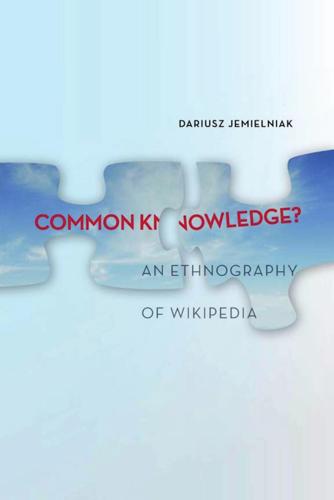
Common Knowledge?: An Ethnography of Wikipedia
by
Dariusz Jemielniak
Published 13 May 2014
Weisband (Ed.), Leadership at a distance: Research in technologically-supported work. Mahwah, NJ: Lawrence Erlbaum. Bywater, M. (2011, February 7). Wikipedia: This is a man’s world. The Independent. Retrieved from http://www.independent.co.uk/life-style/gadgets-and-tech/features/ wikipedia-this-is-a-mans-world-2206207.html Cairncross, F. (2001). The death of distance: How the communications revolution is changing our lives. Boston: Harvard Business School Press. Callahan, E. S., & Herring, S. C. (2011). Cultural bias in Wikipedia content on famous persons. Journal of the American Society for Information Science and Technology, 62(10), 1899–1915. Cammaerts, B. (2008).

Building and Dwelling: Ethics for the City
by
Richard Sennett
Published 9 Apr 2018
The outcome of this gentrifying process strengthens the equation of class difference and physical separation.17 Thus the experience of class in a city today combines close-up personal experience of inequality with an increasingly distant and segregated physical experience. Urbanists speak of the ‘death of distance’ to describe the effects of informatics via hand-held devices; you are always connected, always related. Class is coming to be experienced as a kind of ‘death of distance’ in the cité, even as the ville becomes more composed of class ghettos. IV. MIXING – THE MASK OF CIVILITY Where I live in London may seem to qualify as the sort of iconic mixed neighbourhood celebrated by Jane Jacobs.

Open: The Story of Human Progress
by
Johan Norberg
Published 14 Sep 2020
New York, Harper, 2015, p. 123. 29 R. Wright, Nonzero: History, Evolution & Human Cooperation. London, Abacus, 2001, p. 93. 30 P. Watson, Ideas: A History of Thought and Invention, From Fire to Freud. New York, Harper, 2006, ch. 4. 31 J. Jacobs, The Economy of Cities. New York, Knopf Doubleday, 2016, p. 36. 32 N. Crafts, ‘The “death of distance”’, World Economics, 3, 2005. S. Johnson, Where Good Ideas Come From: The Seven Patterns of Innovation. London, Penguin Books, 2011, Introduction. L. Bettencourt, J. Lobo, D. Helbing, C. Kühnert and G. B. West, ‘Growth, innovation, scaling, and the pace of life in cities’, Proceedings of the National Academy of Sciences, 104(17), 2007. 33 J.
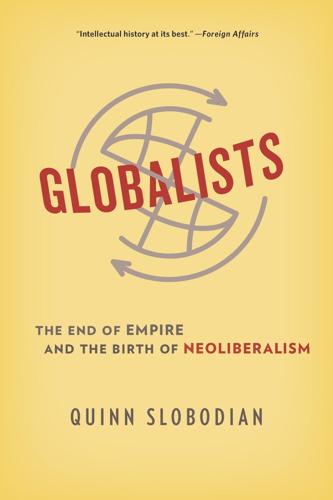
Globalists
by
Quinn Slobodian
Published 16 Mar 2018
As we will see, though, the neoliberal luminaries were actually involved in very practical activity—the application of economic knowledge—getting their hands dirty in advising business, pressuring governments, drawing up charts, and gathering statistics. Across the century, neoliberals saw different bodies as potential enforcers for the world market. The following narrative begins with the period just after the First World War. Globalization talk before the Great War produced many of the tropes that still echo today. Economists spoke of the death of distance, the obsolescence of borders, the impossibility of autonomous domestic policy. That period also introduced a cluster of arguments that are central to the neoliberal imagination. The world economy was unitary and could not be divided meaningfully into constituent nations or empires. It was interdependent, because industrial nations relied on foreign markets for both raw materials and sales, and fluctuations of supply and demand were felt worldwide.

The Rational Optimist: How Prosperity Evolves
by
Matt Ridley
Published 17 May 2010
After reading what he called a ‘batch of rather shallowly optimistic “progressive” books’, he was struck by the repetition of certain phrases which had been fashionable before 1914. The phrases included the ‘abolition of distance’ and the ‘disappearance of frontiers’. But Orwell’s scepticism misses the point. It is not the speed but the cost – in terms of hours of work – that counts. The death of distance may not be new, but it has been made affordable to all. Speed was once a luxury. In Orwell’s day only the richest or most politically powerful could afford to travel by air or to import exotic goods or make an international telephone call. Now almost everybody can afford the cheap goods carried by container ships; almost everybody can afford the internet; almost everybody can afford to travel by jet.
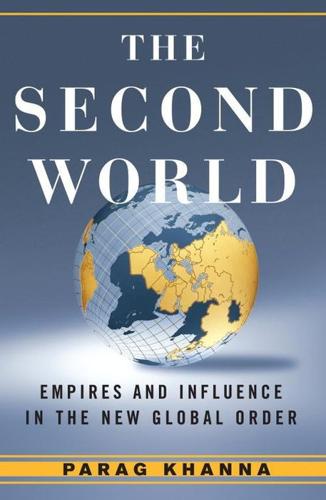
Second World: Empires and Influence in the New Global Order
by
Parag Khanna
Published 4 Mar 2008
In the twenty-first century, however, this hegemony is eroding in America’s traditional backyard of Latin America, where gravities of influence are at play that a complacent geographic determinism could not have predicted. South America’s plentiful natural resources can now reach global markets—particularly Asia—faster than ever. If globalization means the death of distance, then a pillar of U.S. power—dominance by proximity—has ended. But if America does not speak for the Americas, then who does? Latin America has long seemed a geopolitical non sequitur, oceans away from the world’s principal strategic theaters. But today it is casting its eyes east and west to avoid the north.

Connectography: Mapping the Future of Global Civilization
by
Parag Khanna
Published 18 Apr 2016
THE DIGITAL IDENTITY BUFFET Science fiction writers who extrapolate from current technology to pre-imagine scientific breakthroughs paint a large arc of human-technology co-evolution in which our present phase of multiplying identities through digital personae graduates to virtual avatars autonomously acting on our behalf in a parallel but integrated cyber universe and eventually a fusion of four-dimensional capabilities with full-sensory haptic experiences allowing us to teleport our minds to distant physical spaces without changing location. Then we arrive at the Matrix. While the “death of distance” has been proclaimed for decades, today’s combination of urbanization and transportation, communication and digitization, capital markets and supply chains, together make a powerful case against geographic determinism. Each infrastructure investment and technological innovation advances our connected destiny.
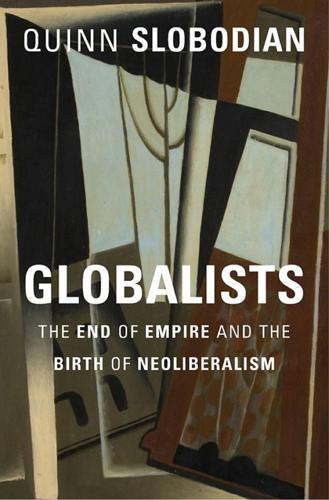
Globalists: The End of Empire and the Birth of Neoliberalism
by
Quinn Slobodian
Published 16 Mar 2018
Across the century, neoliberals saw different bodies as potential enforcers for the world market. The following narrative begins with the period just after the First World War. Globalization talk before the G reat War produced many of the tropes that still echo t oday. Economists spoke of the death of distance, the obsolescence of borders, the impossibility of autonomous domestic policy. That period also introduced a cluster of argu- I n t r o d u ctio n 21 ments that are central to the neoliberal imagination. The world economy was unitary and could not be divided meaningfully into constituent nations or empires.

Your Computer Is on Fire
by
Thomas S. Mullaney
,
Benjamin Peters
,
Mar Hicks
and
Kavita Philip
Published 9 Mar 2021
Thomas Misa (Hoboken, NJ: John Wiley, 2010), 115–141; Mar Hicks, Programmed Inequality: How Britain Discarded Women Technologists and Lost Its Edge in Computing (Cambridge, MA: MIT Press, 2016). 39. Nathan Ensmenger, The Computer Boys Take Over: Computers, Programmers, and the Politics of Technical Expertise (Cambridge, MA: MIT Press, 2010). 40. Frances Cairncross, The Death of Distance: How the Communications Revolution Is Changing Our Lives (Boston: Harvard Business Review Press, 2001); Thomas L. Friedman, The World Is Flat: A Brief History of the Twenty-First Century (New York: Farrar, Straus and Giroux, 2006); Ray Kurzweil, The Singularity Is Near: When Humans Transcend Biology (New York: Viking, 2016); John Mark Newman, “The Myth of Free,” George Washington Law Review 86, no. 2 (October 2016), 513–586. 41.
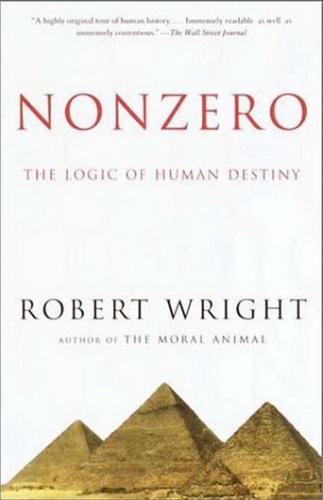
The Moral Animal: Evolutionary Psychology and Everyday Life
by
Robert Wright
Published 1 Jan 1994
But none of these feature is new. All, indeed, are grounded in very old, very basic dynamics of cultural evolution. Their past stubbornness is valid reason to expect their future persistence. Not-so-new feature #1: The Declining Relevance of Distance. A book published in 1997 was titled The Death of Distance. But of course, distance isn’t quite dead. The promotional blurb on the back of another recent book put the matter more soberly: “The constraints of geography are shrinking and the world is becoming a single place.” True. True now; true a century ago, as steamships plied the waterways, telegraph lines crossed oceans, and railroads criss-crossed continents; true five centuries ago, when Columbus crossed the Atlantic; true two millennia ago, when the Silk Road took shape.
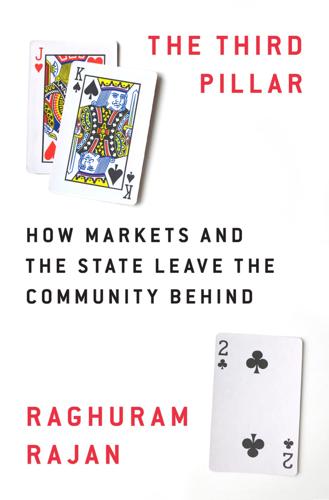
The Third Pillar: How Markets and the State Leave the Community Behind
by
Raghuram Rajan
Published 26 Feb 2019
For instance, with broadband connectivity, and with the support of logistics firms to transport goods quickly, small handicraft makers in remote rural areas can advertise their wares on e-commerce platforms, thus reaching a global market. Retired schoolteachers can remain engaged by tutoring children in the community without leaving home, music teachers can have pupils around the world, while angel investors from elsewhere can mentor local entrepreneurs. The death of distance makes so much more possible in remote communities. Connection to the national market also ensures communities are connected with one another. Not all developed countries are equally well connected. According to a Pew survey, in 2018, over 89 percent of US adults use the internet, including 66 percent of those over 65.5 Only 65 percent of households, though, have access to broadband—accounting for 73 percent of households using the internet.
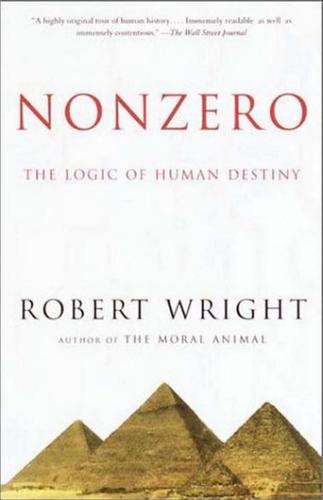
Nonzero: The Logic of Human Destiny
by
Robert Wright
Published 28 Dec 2010
But none of these feature is new. All, indeed, are grounded in very old, very basic dynamics of cultural evolution. Their past stubbornness is valid reason to expect their future persistence. Not-so-new feature #1: The Declining Relevance of Distance. A book published in 1997 was titled The Death of Distance. But of course, distance isn’t quite dead. The promotional blurb on the back of another recent book put the matter more soberly: “The constraints of geography are shrinking and the world is becoming a single place.” True. True now; true a century ago, as steamships plied the waterways, telegraph lines crossed oceans, and railroads criss-crossed continents; true five centuries ago, when Columbus crossed the Atlantic; true two millennia ago, when the Silk Road took shape.
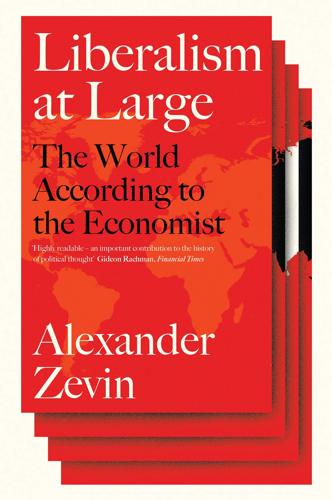
Liberalism at Large: The World According to the Economist
by
Alex Zevin
Published 12 Nov 2019
‘They should be welcomed with open arms’: ‘A New Approach to Financial Risk’, 17 October 1998. 45.For surveys by Crook see ‘Trial and Error: The Third World’, 23 September 1989; ‘The IMF and the World Bank’, 12 October 1991; ‘Globalisation and Its Critics’, 29 September 2001. Many other editors helped, including Frances Cairncross, who wrote favourably on globalization’s environmental, technological and managerial dimensions. Her reports for the Economist turned into Costing the Earth (1993) and the Death of Distance (1997). 46.Weisberg, ‘Tweed Jungle’, Vanity Fair, June 1993. 47.It mocked protestors for taking their stand in such a successfully globalized city, ‘home to Microsoft and Boeing, birthplace of global crazes “Frasier” and fancy coffee’: ‘Storm over Globalisation’, 27 November 1999. 48.Environmental regulations, left unspecified, might be needed where ‘greater good’ was involved, but determining when would be ‘tough’: ‘The Real Losers’, 11 December 1999.
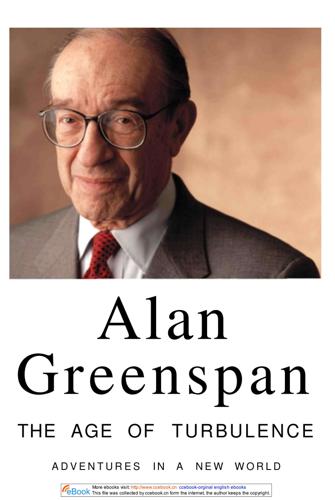
The Age of Turbulence: Adventures in a New World (Hardback) - Common
by
Alan Greenspan
Published 14 Jun 2007
As I've noted, the volume of international trade has been rising far more rapidly than real world GDP since the end of World War II. The expansion reflects the opening up of international markets as well as major gains in communication capabilities that inspired the Economist a few years ago to proclaim "the death of distance." In order to facilitate the financing, insuring, and timeliness of all that trade, the volume of cross-border transactions in financial instruments has had to rise even faster than the trade itself. Wholly new forms of finance had to be invented or developed—credit derivatives, asset-backed securities, oil futures, and the like all make the world's trading system function far more efficiently.